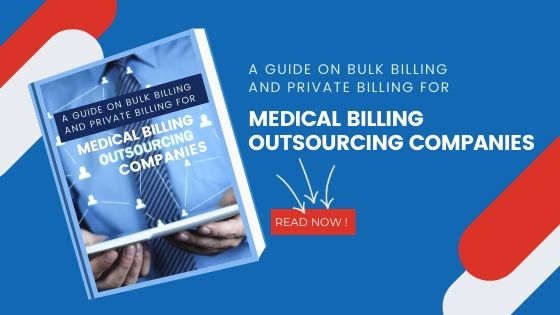The Centers for Medicare and Medicaid Services announced its latest payment rule, which will apply to respective health systems from 2022. The released rules have covered three broad classifications of the healthcare system: Outpatient Prospective Payment System and ASC Payment Rule, Physician Fee Schedule, and Home Health Prospective Payment Rule. According to the press release of the CMS, the new rules focus on enhancing the goals established by the organization.
Know these points on the CMS rules and how they will affect hospital medical billing.
Goals of the New Payment Rule
In its news release, the CMS has made it clear that the organization will work towards achieving the long-term goals of the American healthcare industry.
- The CMS has attempted to align the new payment rules with the goal of closing down the health equity gap.
- Working against the surmounting pressure of the Covid-19 public health emergency remains one of the organization’s top priorities.
- The rules also promote the culture of increased transparency in the entire ecosystem of care management plans.
- The new methodologies will also help the providers focus on the patients’ priorities while improving their clinical outcomes.
- According to the officials, assessing and improving the quality of care will also help the organization strengthen Medicare.
Public Access to Pricing Data
- The price transparency rule established by the CMS earlier in 2021 focuses on approaching the healthcare system from a consumer-centric approach.
- Patients have the right to make an informed decision about their preferred health plan after knowing the complete pricing of products and services, thus making it a more ‘shoppable’ experience.
- According to the new rules, hospitals not complying with the price transparency rule will be charged a heavy penalty known as the Civil Monetary Penalties (CMP).
- For hospitals with less than 30 beds, the CMP will be at a minimum of $300/day. For the ones with greater than 30 beds, the CMP has been fixed at $10 per bed per day.
- The CMS has scaled the CMP value to a greater extent for larger health systems and retained the value for smaller ones.
- The entire calculation of the final payment rule shows that the hospitals could face a minimum penalty of $109,500. At the same time, the maximum amount surpasses $2 million for a full year of non-compliance.
- On the other hand, to ensure that the health systems are able to present specific machine-readable files containing pricing information to the patients, CMS is taking due steps to remove any regulation that might become a barrier to achieving the goal.
- In this section, the CMS requires that these machine-readable files be made accessible to the patients in automated searches and direct downloads.
- Again, this new rule focuses on the patient’s rights to access transparent pricing information beforehand to decide according to their situation.
OPPS and ASC Regulation Changes
CMS has announced a series of changes concerning the OPPS and ASC payment rules. Hospital medical billing teams should be aware of these minute details and incorporate them into their system since any non-compliance with standards and quality could lead to loss of reimbursement.
- Effective from 2022, hospitals will receive a 2% increased outpatient rate for their services. This rule will only be applicable if the hospitals and health systems meet the quality requirements set by the CMS.
- Due to the skewed reimbursement rates for healthcare services in the year 2020, the CMS has taken the 2019 data as the best available data to set and compare the prices for 2022, both for OPPS and ASC.
- An important update from the CMS that will affect the hospital medical billing is the halt of the removal of the In-patient Only List (IPO).
- With many healthcare stakeholders pointing out that the removal of close to 300 procedures from the IPO could lead to a risk of patient safety, the CMS has agreed to halt the disposal for the time being.
- Hospital medical billing teams must be aware of the temporary changes and pay keen attention to the services that were added back this year.
- Even after the final rule, hospital medical billing teams should also note that some procedures remain outside the list. They are 22630 (Lumbar spine fusion), 27702 (Reconstruct ankle joint), 23472 (Reconstruct shoulder joint), and their corresponding codes for anesthesia.
Changes in Physician Fee Schedule
Changes in physician fee schedule are of particular importance for hospital medical billing since some of the temporary modifications applied in light of the public health emergency will be lifted in the new structure.
- As the payment boost provided by the Consolidated Appropriations Act comes to an end, the conversion factor for provider reimbursement will drop from $34.89 to $33.59 for 2022.
- Hospital medical billing for telemedicine will also undergo certain changes since the CMS plans to include audio-only services for diagnosis and evaluation of mental health disorders.
- The agency also plans to incentivize the administration of vaccines by the providers under Medicare Part B. The rates might be almost doubled, taking it to $30 from $17. Experts believe that this change in rates will increase vaccination uptake.
- Medical billing for primary care is also set to change, with the CMS updating the clinical labor rates for the first time in two decades.
- According to the new rules, the payment rates for primary care physicians with greater clinical labor than others, particularly in family practice and geriatrics, are expected to increase.
Apart from these segments, the Home Health payment rates are also expected to increase by 2.6% from 2022. With the vaccination rates going up and elective care returning in its usual format, the new payment rules from the CMS aim to achieve the goals of price transparency with an increased focus on patient choice.
We hope this article helped you navigate through the new payment rule of the CMS. If you have any queries, please write to us in the comment section below. Subscribe to our blog and follow us on LinkedIn, Twitter, Facebook, and Instagram for more such articles and news updates.




